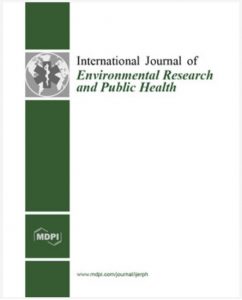Publications

Knee Laxity in the Menstrual Cycle after Anterior Cruciate Ligament Reconstruction: A Case Series
Authors: Mayuu Shagawa 1, Sae Maruyama 2, Chie Sekine 1, Hirotake Yokota 1, Ryo Hirabayashi 1, Ryoya Togashi 1, Yuki Yamada 1, Haruki Osanami 1, Daisuke Sato 1, Mutsuaki Edama 1
Affiliations:
- Institute for Human Movement and Medical Sciences, Niigata University of Health and Welfare, 1398 Shimami-cho, Kita-ku, Niigata City, Niigata 950-3198, Japan
- Albirex Niigata Inc., 5-1923-23, Higashiko, Seiro-machi, Kitakanbara-gun, Niigata 957-0101, Japan
Journal: International Journal of Environmental Research and Public Health - January 2023, Volume 20, Issue 3, Article no. 2277 (DOI: 10.3390/ijerph20032277)
-
Field & Applications:
- Medical
- Orthopedics
- Endocrinology
- Recovery from injury
- Women's health
The aim of this study was to compare anterior knee laxity (AKL), genu recurvatum (GR), and muscle stiffness between reconstructed and contralateral sides in females who underwent anterior cruciate ligament (ACL) reconstruction during early follicular and ovulatory phases.
AKL was measured as an anterior displacement of the tibia using a KS measure. GR was measured as the range of motion of knee hyperextension using a hyperextension apparatus. Muscle stiffness was measured for semitendinosus (ST) and biceps femoris long head (BF) using a MyotonPRO. The study investigated eighteen knees in nine females (Age, 20.4 ± 1.5 years; BMI, 21.5 ± 1.5) with normal menstrual cycles at least 1 year after reconstruction using hamstring autograft.
E2 (Estradiol) concentration did not differ between the two phases, but AKL on the reconstructed side was lower during the ovulatory phase (8.3 [5.9–9.3] mm) than during the early follicular phase (9.4 [7.3–9.7] mm) (p = 0.044, r = 0.756), whereas there was no significant difference between the two phases on the contralateral side. AKL side-to-side difference, GR, and muscle stiffness (ST and BF) on both sides did not differ in either phase.
These results indicate that AKL may behave differently on the reconstructed and contralateral sides during the menstrual cycle.
Keywords: estradiol, anterior knee laxity, genu recurvatum, muscle stiffness
In this study, AKL on the reconstructed and contralateral sides showed different patterns during the menstrual cycle (AKL on the reconstructed side was lower in the ovulatory phase than in the early follicular phase, while AKL on the contralateral side did not differ significantly between early follicular and ovulatory phases). This indicated that the reconstructed ligament and native ACL may respond differently to E2. However, no significant difference in AKL side-to-side difference was seen between the early follicular and ovulatory phases, suggesting a lower necessity of considering the menstrual cycle in clinical settings.


